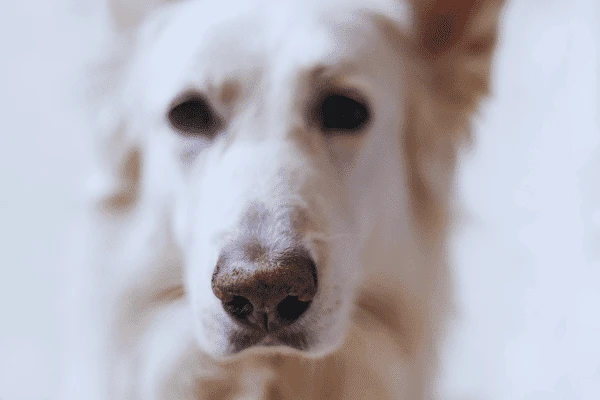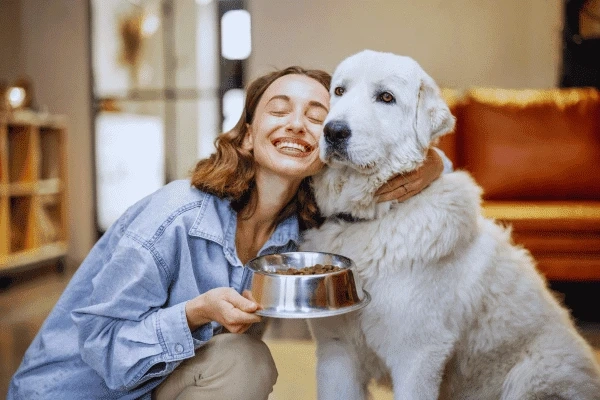Have you ever seen your dog making those forceful heaving motions, but nothing comes out?
That\'s called dry heaving, and while it might look scary, it can be caused by a few different things.
Today, we explain how dry heaving can concern dog owners and what might be causing it. If you want to consider home remedies for your dog\'s dry-heaving cure, read more dedicated cure guides on the Pet Care website.
Why Dry Heaving Worries Us

Throwing up now and then is usually a tiny deal for dogs.
But dry heaving is different because it suggests your dog\'s body is trying to get rid of something but can\'t. This could be due to:
- Something Stuck: Maybe your dog swallowed a toy or ate something they shouldn\'t have. Their body is trying to push it back out, which can cause dry heaving.
- Feeling Under the Weather: Like us, dogs can catch colds. Kennel cough, a common doggy illness, can cause them to cough and dry heave.
- Upset Tummy: Did your pup get into something they shouldn\'t have eaten? An upset stomach can also cause dry heaving.
- A Serious Twist: Bloat is a hazardous condition where the dog\'s stomach twists. This cuts off blood flow and can be fatal if not treated quickly. Dry heaving is a common sign of bloat, so it\'s an emergency!
Beyond the Usual Culprits
While these are the most common reasons for dry heaving, other, less frequent causes exist.
These include problems with the liver or kidneys or even tumors.
Remember: Because there are so many possibilities, it\'s always best to see a vet if your dog is dry-heaving.
What the Vet Can Do
A vet can examine your dog and ask you questions about their behavior and what they might have eaten.
They might also do some tests, like X-rays, to see what\'s happening inside.
This will help them determine the cause of the dry heaving and treat your furry friend properly.
Don\'t wait! It is crucial to identify and treat severe conditions such as bloat promptly.
When to Worry vs. When to Relax
Seeing your dog dry heave can be distressing, but knowing that it doesn\'t necessarily indicate an emergency is essential.
Understanding when you can stay calm and when it\'s time to seek urgent veterinary care is helpful.
Relax If: Your dog only dries heavily once or twice and seems happy and healthy otherwise.
This could be caused by a mild tummy ache or the early stages of kennel cough.
Monitor: Withhold food for a few hours and offer small sips of water. If the dry heaving stops and your dog acts normal, you can keep an eye on them.
See a vet if the dry heaving returns or your dog shows other symptoms.
See a Vet Immediately If:
The dry heaving is accompanied by other concerning signs like:
- Loss of appetite
- Lethargy (tiredness)
- Diarrhea
- Difficulty breathing
- Pale gums
- Excessive drooling
These symptoms can indicate a severe condition, such as a foreign object lodged in the throat, bloating, or even more severe illnesses that require immediate medical attention.
See a Vet Within 24 Hours If The dry heaving continues for more than a day, even if there are no other concerning signs.
This could indicate a worsening kennel cough or another underlying health issue.
Remember: When in doubt, always err on the side of caution and see a vet.
They can diagnose the cause of the dry heaving and give your furry friend the best treatment.
Taking Care of Your Dog with Dry Heaving

Dry heaving in dogs can be unsettling, but there are steps you can take to help your furry friend feel better. Here\'s what to do:
See a veterinarian: This is especially important if your dog\'s dry heaving is accompanied by other concerning symptoms we mentioned earlier. Early diagnosis and treatment are essential, particularly for severe conditions.
If it\'s a non-emergency: Following your vet\'s advice, you can try these home remedies:
Withhold food and water for a few hours: This settles your dog\'s stomach.
After a few hours, offer small sips of water. Gradually increase the amount if your dog keeps it down.
Reintroduce bland food slowly: Start with small meals of boiled chicken and white rice.
Monitor your dog\'s behavior: Watch for continued dry heaving, vomiting, or other concerning signs. If anything seems off, contact your vet.
Keeping Your Dog Healthy and Happy
The best way to deal with dry heaving is to prevent it from happening in the first place. Here are some tips:
Feed your dog a high-quality diet: A balanced diet formulated for your dog\'s age and activity level helps keep their digestive system healthy.
Avoid table scraps and human food: Human food can be difficult for dogs to digest and might upset their stomachs.
Be mindful of chew toys: Choose durable toys appropriate for your dog\'s size and chewing habits to prevent them from swallowing pieces.
Regular vet checkups: Schedule regular vet visits for your dog. This allows early detection of any underlying health issues contributing to dry heaving.
Use these suggestions to maintain your dog\'s health and reduce the likelihood of dry heaving.
If you have any worries about your dog\'s well-being, seek advice from your veterinarian without hesitation.
The Bottom Line on Dog Dry Heaving
Dry heaving in dogs can be scary, but it\'s important to remember that there are many reasons, some more serious than others. The key is to understand the signs and take action when necessary.
- See your vet, Especially if other concerning symptoms accompany your dog\'s dry heaving. Early diagnosis and treatment are crucial.
- Home care (for non-emergencies): Withhold food and water for a few hours, then offer small amounts of water. Gradually reintroduce bland food like boiled chicken and rice.
- Prevention: Feed your dog a high-quality diet, avoid table scraps, choose appropriate chew toys, and schedule regular vet checkups.
With proper attention and veterinary care, most causes of dry heaving can be addressed, and your furry friend can return to feeling happy and healthy.
Frequently Asked Questions
Are there home remedies for dog dry heaving?
While you can take some home care steps for non-emergency dry heaving (like withholding food and water and gradually reintroducing bland food), it\'s always best to consult your veterinarian first. They can diagnose the cause of dry heaving and recommend the best treatment.
When should I see a vet for my dog\'s dry heaving?
See a vet immediately if your dog\'s dry heaving is accompanied by other concerning symptoms like loss of appetite, lethargy, diarrhea, trouble breathing, pale gums, or excessive drooling. Also, see a vet within 24 hours if the dry heaving continues for over a day, even without other symptoms.
What can I feed my dog after dry heaving?
If your vet determines it\'s a non-emergency case, start with small, bland meals like boiled chicken and white rice. Gradually reintroduce your dog\'s regular food over a few days.
How can I prevent my dog from dry heaving?
The best way to prevent dry heaving is to keep your dog healthy with a high-quality diet, avoid table scraps and human food, choose appropriate chew toys to prevent foreign object ingestion and schedule regular vet checkups to detect any underlying conditions early.
What causes dry heaving in dogs?
There are many reasons for dry heaving, including a mild upset stomach, kennel cough, eating something they shouldn\'t have, or a serious condition like bloat. Consult your veterinarian if you\'re ever concerned about your dog\'s health.



